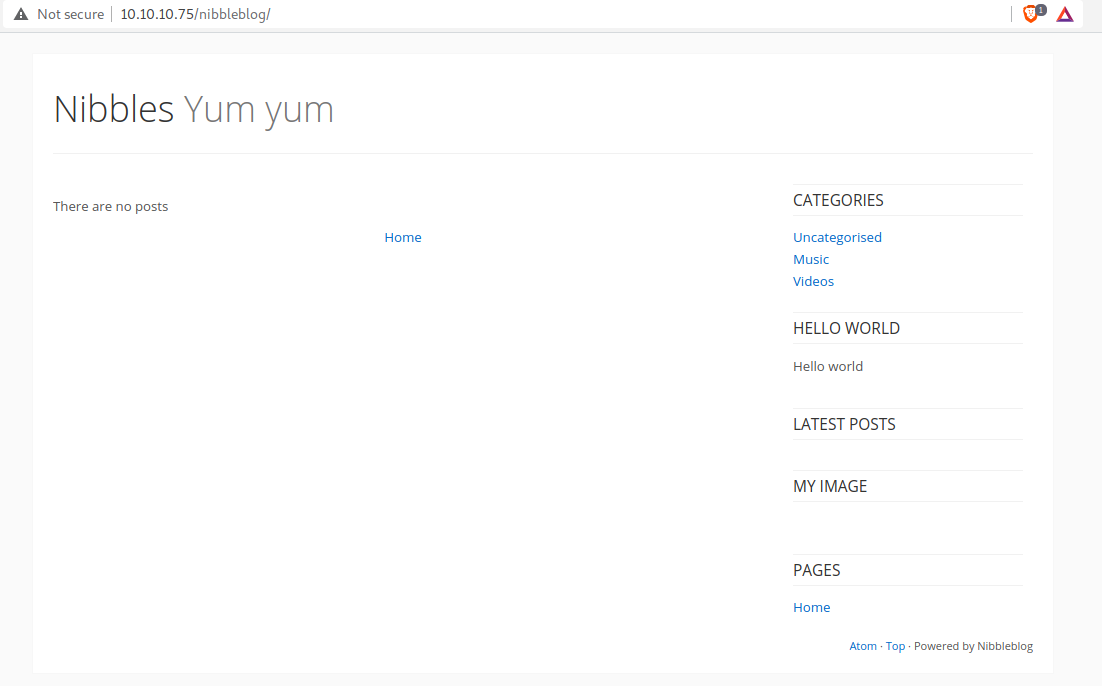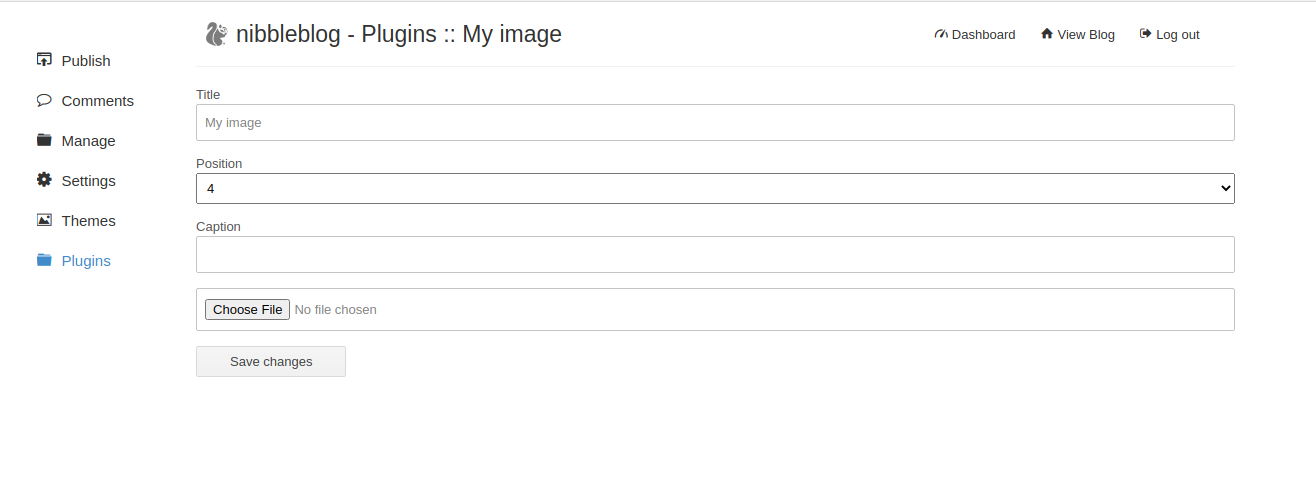HackTheBox: Nibbles Writeup
Nibbles is a retired HackTheBox machine that focuses on exploiting a remote file inclusion vulnerability.
Recon
Service Discovery
Let’s checkout what services are running on the target with nmap:
$ sudo nmap -A -T4 -p- 10.10.10.75 -oN nmap_scan.txt
Nmap scan report for 10.10.10.75
Host is up (0.13s latency).
Not shown: 65533 closed ports
PORT STATE SERVICE VERSION
22/tcp open ssh OpenSSH 7.2p2 Ubuntu 4ubuntu2.2 (Ubuntu Linux; protocol 2.0)
| ssh-hostkey:
| 2048 c4:f8:ad:e8:f8:04:77:de:cf:15:0d:63:0a:18:7e:49 (RSA)
| 256 22:8f:b1:97:bf:0f:17:08:fc:7e:2c:8f:e9:77:3a:48 (ECDSA)
|_ 256 e6:ac:27:a3:b5:a9:f1:12:3c:34:a5:5d:5b:eb:3d:e9 (ED25519)
80/tcp open http Apache httpd 2.4.18 ((Ubuntu))
|_http-server-header: Apache/2.4.18 (Ubuntu)
|_http-title: Site doesn't have a title (text/html).
No exact OS matches for host (If you know what OS is running on it, see
https://nmap.org/submit/ ).
We see that the target is running Linux, and has ssh and http enabled. Let’s open a web browser and check out the website.
At first sight, there isn’t much there besides a “Hello, world” message. However, examining the source code with Ctrl+U shows that there is a hidden directory commented out:

Navigate to that hidden directory:

I started poking around the website to find any vulnerabilities or injection points. The “http://10.10.10.75/nibbleblog/index.php?controller=blog&action=view&category=uncategorised” URL caught my eye. Perhaps these HTTP GET parameters are vulnerable to SQL injection?
I tested this out with sqlmap, but none of the parameters were vulnerable to
SQLi.
Webserver Enumeration
At this point I wanted to enumerate the website further, so I ran gobuster and
found the following hidden files and directories.
$ gobuster dir -u http://10.10.10.75/nibbleblog -w /usr/share/wordlists/dirbuster/directory-list-2.3-small.txt -x php,txt
/index.php (Status: 200) [Size: 2987]
/sitemap.php (Status: 200) [Size: 402]
/content (Status: 301) [Size: 323]
/feed.php (Status: 200) [Size: 302]
/themes (Status: 301) [Size: 322]
/admin (Status: 301) [Size: 321]
/admin.php (Status: 200) [Size: 1401]
/plugins (Status: 301) [Size: 323]
I will only be discussing admin.php in the writeup, but I encourage you to
poke around and explore the other files as well.
Initial Foothold
The admin.php page contains a login panel for managing the blog. Since we
already know there is an admin user, all we need is the password. I tried
hydra with rockyou.txt as the wordlist, but grew impatient as it was taking so long.
Instead, I was able to guess that nibbles is the password. lol~
Now we have full access to the blog!

Vulnerability Discover
I searched online for “nibbleblog vulnerabilities” and found a shell upload exploit technique from packetstorm.
Here’s the snippet that describes the vulnerability:
When uploading image files via the “My image” plugin - which is delivered with NibbleBlog by default - , NibbleBlog 4.0.3 keeps the original extension of uploaded files. This extension or the actual file type are not checked, thus it is possible to upload PHP files and gain code execution.
Please note that admin credentials are required.
Exploitation
I continued to follow the steps in the above link and uploaded a PHP reverse shell.

After setting up a netcat listener, time to execute the payload:


The user flag is in /home/nibbler/user.txt.
Privilege Escalation
Performing a sudo -l reveals our current user can execute the script
monitor.sh as root. But where is this file located?
Within nibbler’s home directory there is a folder named personal.zip.
We need to unzip it a move into the extracted directories to find the monitor.sh shell script.
Since we have full permissions for this script, I did the following to print out the root flag:
$ echo "cat /root/root.txt" >> monitor.sh
$ sudo ./monitor.sh
Conclusion
I had a lot of fun with this box. Guessing the admin credentials and figuring out the privilege escalation vector was very satisfying.